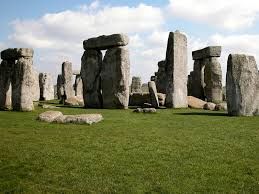Unveiling the Mysteries of Stonehenge

Introduction
Stonehenge stands as one of the most iconic and enigmatic monuments in the world, located on the Salisbury Plain in Wiltshire, England. This prehistoric monument, dating back to around 2500 BC, is a UNESCO World Heritage site and attracts millions of visitors each year. Its significance lies not only in its remarkable construction but also in the many theories surrounding its purpose, from astronomical observatory to sacred burial site.
The Structure and Its Construction
Stonehenge is composed of a circular arrangement of massive stones, some weighing as much as 25 tons, arranged in a pattern that suggests advanced engineering skills. The stones, known as sarsens and bluestones, were transported from distances as far as 200 miles, raising questions about the methods used by Neolithic people to move such colossal weights. Recent archaeological studies suggest that a complex system of sledges and a variety of manpower might have been employed to achieve this feat.
Recent Discoveries
Significant discoveries in recent years have shed light on the broader landscape surrounding Stonehenge, revealing hundreds of archaeological features, including burial mounds and prehistoric monuments in the vicinity. These findings support the theory that Stonehenge was part of a larger ceremonial complex. In 2020, advanced archaeological techniques such as LiDAR scanning uncovered a previously unknown ring of pits surrounding the site, suggesting even more extensive ancient activities.
Cultural and Historical Significance
Throughout history, Stonehenge has been a focal point of spirituality and cultural heritage. It is thought to have served various functions throughout different periods, including rituals and astronomical observations aligned with the solstices. The summer solstice, when the sun rises directly over the stones, continues to draw thousands of visitors who gather to celebrate with traditional ceremonies.
Conclusion
As researchers continue to unlock the secrets of Stonehenge, its status as an enduring symbol of ancient human ingenuity and spirituality seems assured. The continued study of this prehistoric masterpiece not only enhances our understanding of human history but also invites us to ponder the captivating mysteries of our ancestors. In a world increasingly disconnected from its past, Stonehenge remains a powerful reminder of our collective heritage, drawing visitors from around the globe to reflect on the ancient rites and teachings it embodies.






